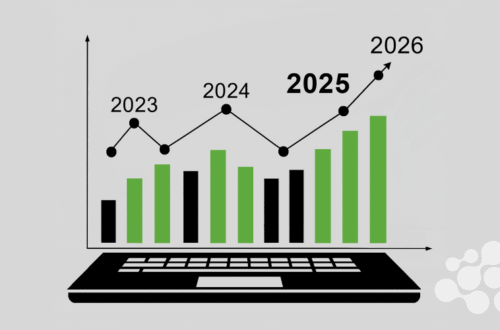If you’ve ever stared at a blank page trying to write copy that doesn’t just sound good, but actually works—you’re not alone. Writing copy that converts is an art, sure, but in today’s world, it’s also a science. That’s where AI steps in. I’m not saying robots are replacing good copywriters. Not even close. But the smart use of AI-powered tools can help you write faster, test smarter, and boost your conversion rates without losing your voice. Here are five AI tools I’ve personally explored (and in some cases used obsessively) to write better-performing copy. Whether you’re crafting headlines, emails, landing pages, or ad creatives, these can give you a serious edge.
1. Jasper: The All-Around Copywriting Assistant
If you’ve dipped your toe into AI writing tools, chances are you’ve heard of Jasper (formerly Jarvis). It’s built specifically for marketers and copywriters, and it shines when you’re writing conversion-focused copy.
What it does well:
- Helps generate long-form blog content, product descriptions, Facebook ads, and email sequences.
- Comes with pre-built “recipes” like AIDA and PAS frameworks for persuasive copywriting.
- It’s pretty good at maintaining a consistent tone if you train it well.
Where it shines for conversions: The real magic is in its templates designed for landing pages and ad copy. You give it a bit of direction, and it churns out multiple variations that are tested against high-performing structures.
My take: It’s especially useful when you hit a creative block. You still have to edit and tweak, but Jasper gives you that much-needed first draft or spark. Think of it like a brainstorming partner who doesn’t get tired.
2. Copy.ai: Quickfire Copy Ideas on the Fly
Copy.ai is like the enthusiastic intern who’s always bursting with new headline ideas. It’s fast, free to try, and focused heavily on short-form copy.
What it does well:
- Instant generation of product copy, taglines, LinkedIn posts, and email subject lines.
- Surprisingly useful when you’re naming something (products, services, newsletters—you name it).
- You can choose the tone, which makes it decent for brands with personality.
Where it shines for conversions: The speed at which it gives you options makes it perfect for A/B testing. You can plug in different AI-generated versions of ad headlines or calls-to-action and see which one pulls in more clicks.
My take: I use Copy.ai when I’m short on time and need a bunch of copy variations fast. It’s not always perfect out of the box, but it’s a great way to explore tone and style quickly.
3. Anyword: Copy That’s Scored for Conversion
Anyword is probably the most “data-driven” tool on this list. What sets it apart is that it gives your copy a predictive performance score before you even hit publish.
What it does well:
- Suggests optimized versions of headlines, CTAs, and product descriptions with conversion scores.
- Tailors content for different audiences like “engaged shoppers” or “cold prospects”.
- Integrates with ad platforms for quick deployment.
Where it shines for conversions: The predictive performance score is gold. It’s like having a mini focus group in real time. You write five variations of a headline, and it tells you which one is likely to perform best based on historical data.
My take: This is my go-to when conversions are the primary goal. I don’t rely on the score blindly, but it gives me a smart starting point—especially for paid campaigns.
4. Surfer + ChatGPT: SEO Copy That Doesn’t Bore Readers
You’re probably wondering what an SEO tool is doing on a list about conversion-focused copy. But here’s the thing: if no one finds your copy, it doesn’t matter how persuasive it is. Surfer helps you optimize content for search engines, while ChatGPT (especially when prompted with the right tone and intent) helps you write in a natural, conversational style.
What it does well:
- Surfer gives real-time keyword suggestions and on-page SEO feedback.
- When paired with ChatGPT, you can write content that ranks and reads like it was written by a human.
Where it shines for conversions: This duo works great for blog posts and landing pages. You get visibility from search traffic, and then you use conversion-focused copy frameworks to keep visitors engaged and drive action.
My take: I use Surfer + ChatGPT when I’m creating mid-to-long form content where organic traffic matters. It helps me find that sweet spot between what Google wants and what my reader needs.
5. Headlime: Built for Landing Pages and Funnels
If you’re building out full funnels—think landing pages, lead magnets, and sales emails—Headlime is worth checking out. It’s specifically geared toward conversion copywriting at every touchpoint.
What it does well:
- Helps you build entire landing pages with copy that follows proven structures.
- Offers templates based on top-performing campaigns.
- The UI is simple and clean, so you’re not overwhelmed with options.
Where it shines for conversions: The way it structures landing pages is really effective. You can plug in your product info, and it builds out a page that’s headline-to-CTA optimized. Perfect for solo marketers and lean teams.
My take: I like Headlime for its focus. It’s not trying to be everything to everyone. If you’re launching a product or campaign and need high-converting assets fast, this tool keeps you moving.
Final Thoughts: Tools Are Great, But You Still Need Strategy
These tools can seriously upgrade your writing game, but they won’t replace the human touch. AI doesn’t understand your audience the way you do. Use them as a way to save time, explore new directions, and test ideas at scale. Great copy still comes down to knowing your customer, speaking their language, and guiding them toward action. AI just makes the path a little smoother. Try a few of these tools and see what clicks. You don’t need all five, but having one or two in your arsenal can be a game-changer. Let me know which one you end up trying—or if you’ve already got a favorite in your toolkit.






